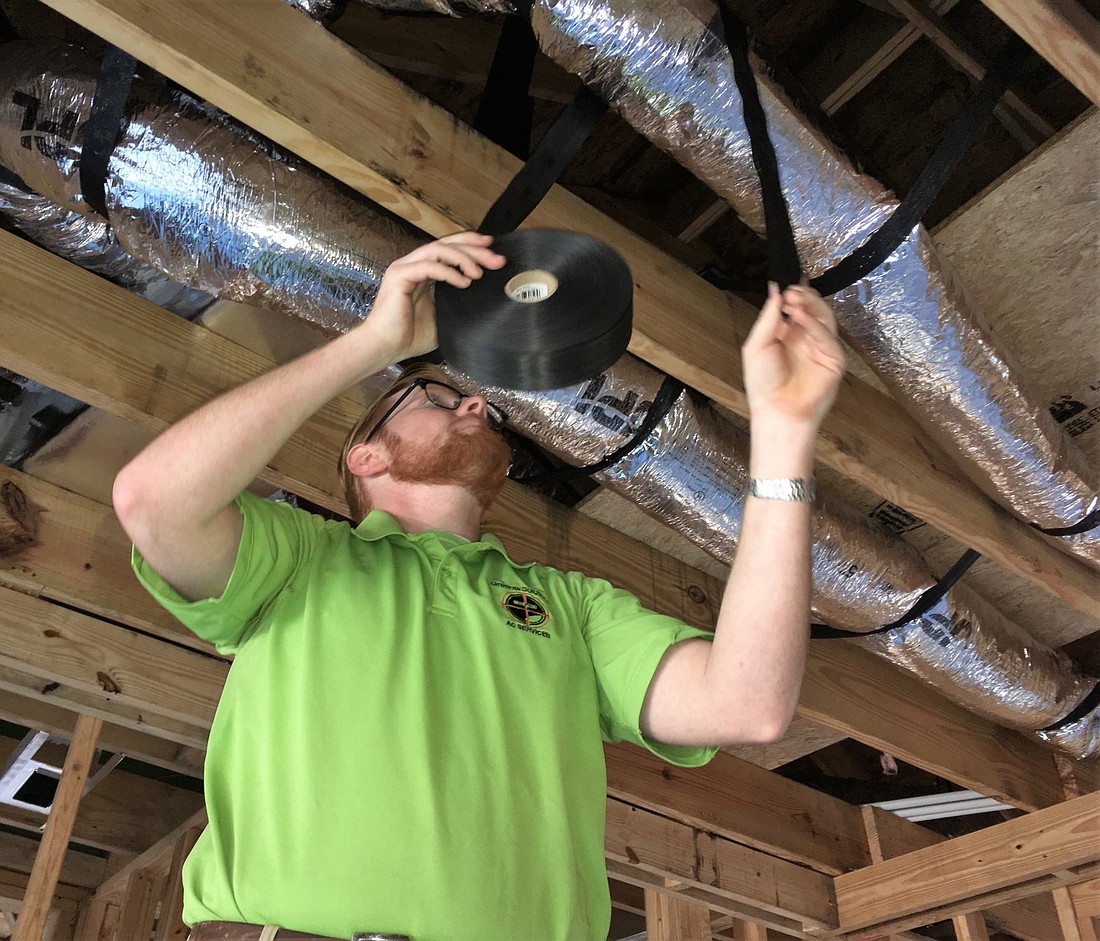
Jack Hogan is learning complex building physics on the job, performing load calculations to find the best heating and air conditioning system based on a home’s orientation, insulation, windows and size.
A student in the Northeast Florida Builders Association’s Apprenticeship Program, Hogan said he looks forward to a career with job security because air conditioning services always will be in demand in Florida.
“I tried college, but it wasn’t for me,” said Hogan, 25. “I knew I wanted to get into a trade.”
The training program of the Northeast Florida Builders Association offers a sound solution to a critical shortage of skilled labor in Jacksonville’s construction industry, according to leaders in education and the building trades.
It’s one of two nonunion trade associations with construction apprenticeships in Florida, and one of fewer than two dozen across the country.
“Apprenticeship is one of the best-kept secrets,” said Christina Thomas, NEFBA apprenticeship director and a former career counselor.
“College is not the only pathway. We’re a good option with pay increases and graduation with no debt. You get to physically do what you’ll be doing,” she said.
Designed to strengthen the labor force and connect people with work, the program provides real economic benefits, said Curt Kinder, Hogan’s instructor and employer as owner of Greener Solutions Air Conditioning Services. Kinder said not long ago he had to post an ad on Craigslist to find help.
“There’s a labor shortage,” he said. “The contracting community has a shortage of good, reliable staff. We’ve seen it all over the nation.”
As the housing market gradually recovered from the recession over the past decade, many construction tradesmen left the field to find work elsewhere.
Kinder and Thomas also attribute the shortage to an aging workforce and a culture that promotes college-related careers. As a result, contractors have struggled to meet the demand for homes, and project delays are common.
NEFBA’s four-year training program requires 8,000 work hours and 700 hours of classroom instruction at no cost to the apprentice.
It encompasses four building trades: carpentry; heating, ventilation and air conditioning technicians; electricians; and plumbers.
Some 1,700 students have moved through the program since its first graduating class in 1976, Thomas said. Currently, 160 employers participate.
Regulated by the Florida Department of Education, employers pay NEFBA $425 per apprentice per year to help cover the cost of 19 instructors and administrative expenses. Larger companies may have as many as 20 apprentices in the program at one time.
The apprenticeship weeds out candidates who are not ideally suited for the work or lack a mechanical aptitude, Kinder said. “You work the trade under a master. The outcome is night and day, a completely different experience.”
The program requires a significant commitment by the employers, who in addition to the NEFBA fee also must pay the apprentice. Compensation starts at 50 percent of the established wage for the position, then increases by 5 percent every six months.
Apprentices typically make $11 an hour to start, Thomas said, and by graduation earn about 85 percent of full pay. “By comparison, we keep the investment cost for the apprenticeship pretty low,” she said.
Hogan, who has been working at a 1,700-square-foot home under construction in northern St. Johns County, is nearing the end of his first year in the program. “They’ve been teaching me a lot,” he said.
Kinder said he’s learning, too. While two of his apprentices have left the program over the years, two are still enrolled. While it can be challenging, he’s become convinced it’s a good fit for his company.
“I’m learning as I go,” Kinder said. “There’s more to it than I would have thought. But I absolutely recommend it, both tactically for your own business and strategically for us all.”